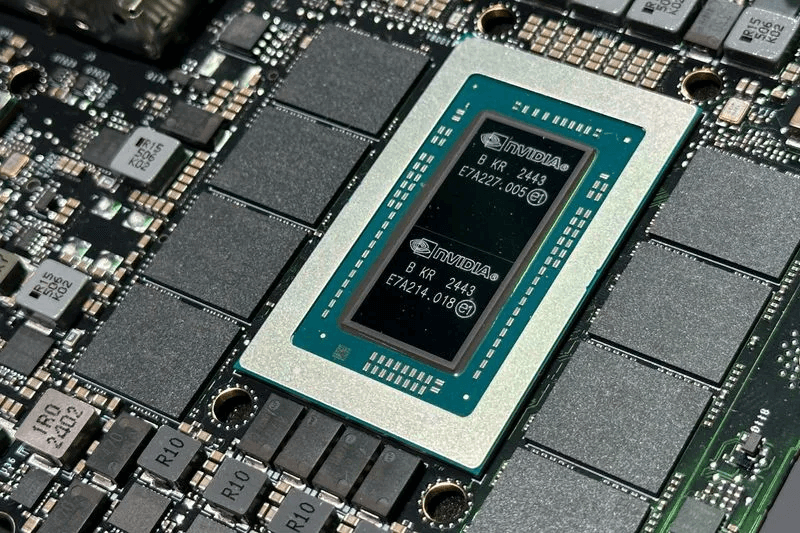$5 Trillion?


When you hear the words “five trillion dollars”, you probably picture a sci-fi empire or a Monopoly board on steroids, not a chip company from Santa Clara that sells glorified rectangles.
But here we are: Nvidia just hit a $5 trillion valuation.
That’s “buy the entire NBA and still have enough left to rebuild Mars” money.
And yet, somehow, we’re all sitting here trying to figure out whether to celebrate, invest, or just laugh nervously and refresh our Robinhood apps.
I remember when Nvidia was just the graphics card company for kids building gaming PCs in their parents’ basements. Now it’s the most valuable company on Earth, the beating heart of the AI gold rush. The same AI that can write breakup letters, fake presidents, and apparently generate fake homeless men that make people call 911.
That’s a real thing by the way, teens have started using AI image generators to create ultra-realistic photos of a homeless man sitting on someone’s porch or staring through their window, then sending it to friends just to freak them out.
Police departments across multiple states issued warnings because the prank was wasting emergency resources and sending real officers to chase imaginary humans.
But Nvidia didn’t become the world’s richest company because it sells chips, it became the world’s richest company because it sells permission to dream.
Think about it; every startup founder, government official, and Fortune 500 exec is out here chanting “AI!” like it’s the national anthem. Nvidia is quietly whispering, “Sure, but you’ll need our chips for that.”
Is this business or extortion with branding?
Intel seems to be trying to remember what year it is, AMD seems to be running after Nvidia like a toddler chasing a sports car. And Apple? Pretending it’s above AI.
There's no denying it though, Nvidia’s the dealer. The casino, the entire house, and we’re all inside playing with chips we can’t afford. See what I did there?
Every AI startup you see on LinkedIn bragging about raising $50 million is secretly praying for two things: That their model doesn’t hallucinate during investor demos, and that Nvidia never raises prices again.
If Nvidia ever sneezes, the whole AI economy catches a cold. That’s how deep their chokehold is.
But the bigger question isn’t how Nvidia got here, it’s what happens next.
We’ve seen this movie before: dot-com boom, crypto mania, and metaverse hype. Every time humanity finds a shiny new buzzword, someone becomes a trillionaire, and someone else becomes a cautionary tale.
Will AI eventually stop being the shiny new buzzword and become infrastructure, like electricity or Wi-Fi?
More importantly, will Nvidia eventually become the next Microsoft, quietly owning everything for decades? Or the next Yahoo, proudly reminding us it used to be the future?
Do you see Nvidia’s $5 trillion moment as the peak or just halftime?
I'm curious, do you have your own theory about this? Maybe your own article idea or your own 2 a.m. rant about AI markets?
Pitch me your outline.
If it gets approved, you’ll get $500 when it runs, or $750 if you include your own original 60-second video and image to go with it.
Best,
Matt Masinga
Interesting Reply and Questions for Neil
This is a reply from one of our avid readers, Philip A. Femanoto, to our friend Neil Balthaser’s article: Small Models, Big Wins?
This reply also includes a few thoughtful questions for you, Neil. Please take a moment to respond when you can.
Hi Matt,
The notion that SLMs are better for practical implementation while LLMs serve well as more visionary "Jack of all trades but master of none" occurred to me a few months ago, and a couple of concerns struck me:
1. Given the presumed greater expertise with lower error rate attributed to SLM's there is a greater chance of putting low and mid-tier "staffers" out of a job. This fuels the argument that there will be less fodder in the operations training arena to create the budding new operations managers who will lead the flock to water...assuming humans are still running the ship, at least in the short term. So does AI jeopardize the supply of talented humans in such an AI-riddled operation?
2. With multiple SLMs wearing their scope blinders, where do the control algorithms reside that coordinates each SLM to construct an environment that's greater than the sum of its parts? Where are the components that are responsible for project creation, inter-modular communication, and deadlines in order to effect control and handshaking between the proposal, contract, design, implementation, production, supply, distribution, support, etc.?
Great stuff. Thanks!
Best,
Phil.
Neil
Please check your email and send us your bank details so we can process your $750 payment.
Thank you for reading and contributing.
*Disclaimer: The content in this newsletter is for informational purposes only. We do not provide medical, legal, investment, or professional advice. While we do our best to ensure accuracy, some details may evolve over time or be based on third-party sources. Always do your own research and consult professionals before making decisions based on what you read here.




